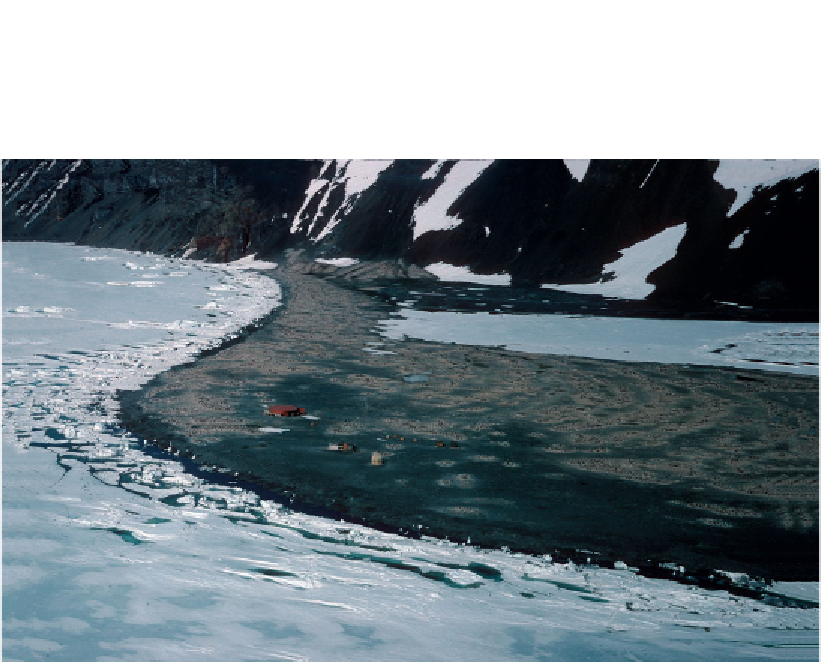Geoscience Reference
In-Depth Information
Figure 10.8
Antarctic Specially Protected Areas: photo of Cape Hallett with remains of Hallett Station in
the foreground and the ASPA at the rear. (Credit: David Walton, BAS)
Management (III), Prevention of Marine Pollution (IV), and Area Protection and
Management (V). The
first four annexes were adopted in Madrid, together with the
protocol. The
fifth Annex was adopted only days later at the XVIth ATCM in Bonn,
and entered into force in 2002.
Annex V replaced earlier categories of protected areas, and provides for the
designation of Antarctic Specially Protected Areas (ASPA) and Antarctic Specially
Managed Areas (ASMA). ASPAs are designated to protect outstanding environmental,
scienti
c, historic, aesthetic or wilderness values, while an area where activities are being
conducted or may be conducted in the future may be designated as an ASMA to assist in
the planning and coordination of activities and minimise environmental impacts.
Annex VI on Liability Arising from Environmental Emergencies was the
subject of protracted, complicated discussions. These issues of liability raised again
fundamental legal questions, which had not been solved during the CRAMRA
negotiations. Eventually the annex was agreed at the XXVIIIth ATCM in Stockholm
in 2005. It deals with both governmental and nongovernmental activities in the
Antarctic Treaty area. The operators of such activities must undertake reasonable
preventative measures and establish contingency plans for responses to incidents
which can adversely impact the Antarctic environment. They must take prompt and



Search WWH ::

Custom Search